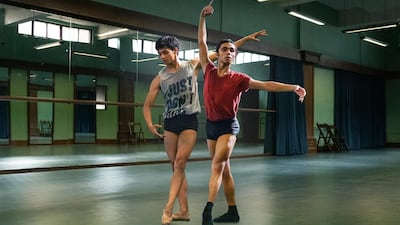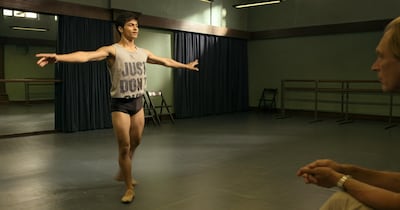The lives of Manish Chauhan, 26, and Amiruddin Shah, 18, from Mumbai are entwined. They both come from low-income communities – Chauhan's father drives a taxi, while Shah's is a construction worker. Both boys dropped out of formal education early on. Today, they are professional ballet dancers, having attended some of the most prestigious dance schools in the world.
The duo are also the subject of a Netflix film released last month, Yeh Ballet. "My friends still confuse ballet with belly dancing," Chauhan, who stars in the film, says with a chuckle.
A dance form usually associated with privilege, ballet was a world away from what the two had experienced – growing up, they hadn’t even heard of its existence.
In 2015, Shah, then only 13, and Chauhan, 21, joined Danceworx Academy of Performing Arts in Mumbai. Shah, who was into hip-hop, was recruited by the academy because it needed someone who could do cartwheels and backflips. Chauhan, who enjoyed breakdancing, decided to buy himself the gift of a few classes at the academy for his birthday.
It was around that time that the academy started offering classical ballet lessons. These were headed by Yehuda Ma’or, an internationally renowned ballet master who has trained with legends such as Natalia Makarova and Rudolf Nureyev, and who was in India for a three-month stint.
Ma’or, 76, says both Chauhan and Shah had “ballet bodies”, certain characteristics of muscle and bone alignment – something he was able to recognise after more than 50 years of teaching the discipline.
“The dance world does not run on democracy,” he says. “I focus on the ones that I think stand a chance of making it in the international ballet world.”
Despite their promising potential, ballet didn’t instantly become a part of Shah or Chauhan’s worlds. “The terminology of ballet is in French,” says Chauhan. “Initially when I danced in class, I didn’t even know how to say the names of the steps. So I could not ask Yehuda any questions I had about the dance routine.”
Yet Chauhan persisted, writing down terms such as “pas de bourree” and “tendu” at the end of each class. He then asked other students to help him with the pronunciation until he could enunciate the words himself.
Ma’or’s training demanded the boys attend all four classes he taught at the academy, resulting in more than six hours of dancing each day. This meant Chauhan often began his day in the early hours and even slept at railway stations when he missed the last train home.
Support from his family for a full-time career in dance was also hard to come by.
“My parents had never seen anyone get a job through dance,” Chauhan says. “They thought I would end up struggling, like the rest of the dreamers who come to Mumbai.”
Ma’or would also take the pair to class in taxis and invite them for meals so they could get the healthy nutrition they needed, all at his own expense. “He’d bribe Amir and me,” says Chauhan with a laugh. “Good pirouettes usually led to frappuccinos.”
In 2017, Ma’or’s training and the boys’ talent led to the Joffrey Ballet School in New York inviting the duo for its summer programme. “Amir and Manish loved ballet and had laser-focus towards the classical technique,” says Ma’or when asked how the boys were able to excel at the discipline most begin training in as toddlers.
“Besides, a dancer’s life is short and there isn’t much time to play around – the boys knew that,” he adds. The officials at the American embassy in Mumbai didn’t, though. The duo were rejected for visas on two separate rounds of applications, due to a weak financial background. They also had to scramble around for travel funds. “It was frustrating,” says Chauhan. “If one obstacle sorted itself out, another appeared.”
The boys eventually made it across the Atlantic in 2017, with a year-long scholarship to train at the Oregon Ballet Theatre in Portland.
Since filming, the boys’ lives have taken some dramatic turns. Unable to cope with the many sociocultural changes at the Oregon Ballet Theatre, Shah returned home after only three months. He later learnt from Ma’or that the School of American Ballet and the Royal Ballet School in London, were “fighting” to have him at their respective institutions. In the end, the latter won, making Shah the first Indian student to attend the school on a full three-year scholarship.
Chauhan, meanwhile, rose to the ranks of company dancer at the Oregon Ballet Theatre. Since returning to Mumbai, he has been invited to the Henny Jurriens studio in Amsterdam – a talent scouting space for some of the world’s leading dance troupes and choreographers.
“They are both at a level that there is no space for them here,” says Ma’or, who continues to teach in Mumbai. “Their dance future lies outside India.”
Yeh Ballet is available for streaming on Netflix




